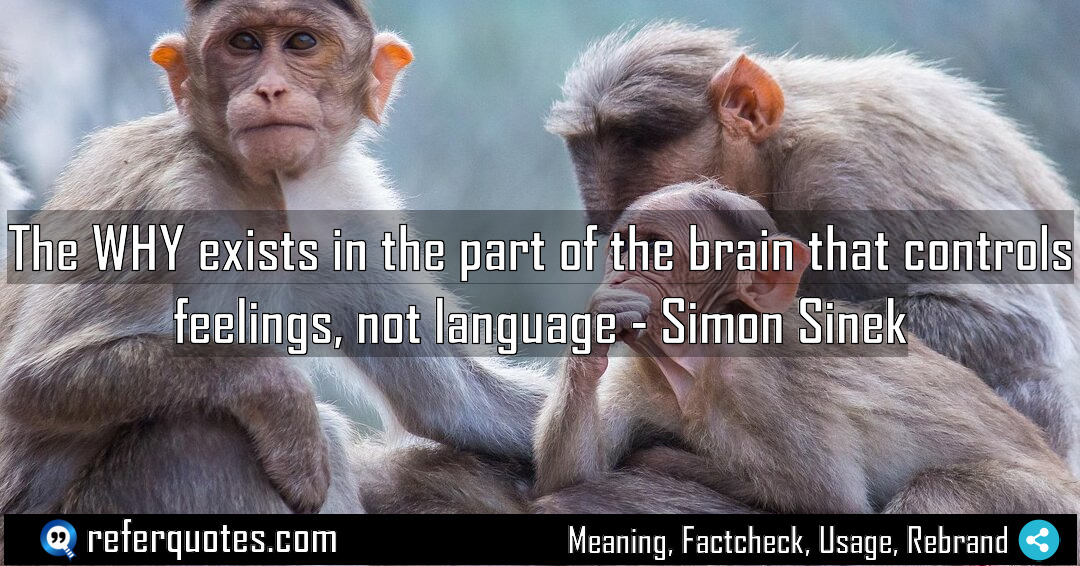You know, that idea from Simon Sinek about “The WHY exists in the part of the brain…” is a game-changer. It explains why logic alone fails to move people while a powerful purpose can inspire incredible loyalty and action. It’s all about connecting to the feeling center.
Share Image Quote:Table of Contents
Meaning
Your “Why”—your core purpose and belief—isn’t a logical argument you articulate; it’s a deep-seated feeling that drives your behavior and inspires others on an instinctual level.
Explanation
Here’s the thing I’ve seen over and over. We get so caught up in *what* we do and *how* we do it, the features and the specs. But that’s all cortex stuff. The neocortex. It processes language and rational thought. Sinek’s big insight, backed by neuroscience, is that the “Golden Circle” model—starting with Why—works because it targets the limbic system. That’s the part of the brain responsible for feelings, trust, and all decision-making. It doesn’t process language well, but it *feels* the why. So when you communicate from the inside out, from Why to How to What, you’re speaking directly to the part of people that says, “I believe in that. I trust that.” It’s a gut-level connection, not a head-level one. And that’s what builds movements.
Quote Summary
| Context | Attributes |
|---|---|
| Original Language | English (4122) |
| Category | Business (319) |
| Topics | decision making (18), emotion general (117) |
| Literary Style | explanatory (12), scientific (57) |
| Overall Quote Score | 74 (83) |
Origin & Factcheck
This concept comes straight from Simon Sinek’s 2009 book, “Start with Why: How Great Leaders Inspire Everyone to Take Action.” It’s a core component of his “Golden Circle” framework. While the quote is often shared on its own, its full power is understood in the context of the entire book and his related TED Talk, which has millions of views.
Attribution Summary
| Context | Attributes |
|---|---|
| Author | Simon Sinek (207) |
| Source Type | Book (4735) |
| Source/Book Name | Start with Why: How Great Leaders Inspire Everyone to Take Action (54) |
| Origin Timeperiod | 21st Century (1995) |
| Original Language | English (4122) |
| Authenticity | Verified (4735) |
Author Bio
Simon Sinek champions a leadership philosophy rooted in purpose, trust, and service. He started in advertising, then founded Sinek Partners and gained global attention with his TED Talk on the Golden Circle. He advises companies and the military, writes bestselling books, and hosts the podcast “A Bit of Optimism.” The Simon Sinek book list features Start With Why, Leaders Eat Last, Together Is Better, Find Your Why, and The Infinite Game. He speaks worldwide about building strong cultures, empowering people, and leading for the long term.
| Official Website | Facebook | X| Instagram | YouTube
Where is this quotation located?
| Quotation | The WHY exists in the part of the brain that controls feelings, not language |
| Book Details | Publication Year/Date: 2009; ISBN/Unique Identifier: 978-1591842804; Last edition: Portfolio/Penguin 2011; Number of pages: 256 |
| Where is it? | Chapter 4: This Is Not Opinion, Approximate page from 2011 edition |
